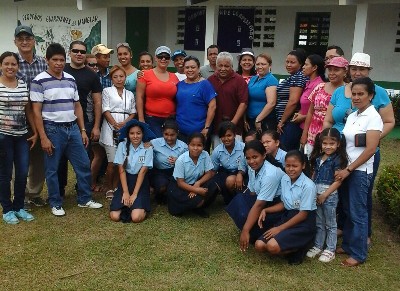Guardians of the Mangroves

In 2006 Carmen Aparicio Guzman, Principal of the local school in El Espave felt the need to educate her students on the importance of preserving the mangrove ecosystems in the bay of Chame. Many of the school’s students come from families of ‘carboneros’ (people who harvest the mangrove for charcoal).
To accomplish her goal, Sra. Carmen created a classroom project, called ‘Los Guardianes del Manglar’ (Guardians of the Mangroves).
“At first, people did not think it was possible for the mangroves to disappear.” Sra. Carmen explained. However, year after year as the mangroves diminished, it became clearer to everyone that the mangroves would vanish if not protected. The loss of the mangroves would be detrimental to the community, both economically and environmentally.
Chame is home to many who rely heavily on the mangrove ecosystem. Some use the mangroves for wood to build ranchos, others to make charcoal, and fishermen profit from the clams and crabs that live in the mangroves. “The intention is not to stop these activities, but rather to encourage the community as a whole to help preserve and protect the resource they rely on”.
With this in mind, ‘Los Gurdianes del Manglar’ aims to educate on the need for reforestation and greater protection of mangroves. The program has connected with other local schools, universities inside Panama and internationally, as well as government organizations including ANAM, and various NGO’s also working to protect the mangroves.
Today it is clear that the program has flourished into a community vision for greater protection of the mangroves. As a result of the program, each year students and family members plant up to 30,000 new mangrove seeds. There is also a vivero (greenhouse) in the back of the school, which is used primarily as a teaching tool for the students.
This August Aurora E. Pinzon C., the third grade teacher at the El Espave School, worked to get her students ready for a presentation on the mangroves for various teachers from the area. The younger students dressed up in costumes, representing various elements of the mangrove ecosystem, like the trees, the waves and little fish, while the older students helped relay important information on the program.
While the project has received minimal funding over the years it has persevered, encouraging and motivating people of all ages to protect Panama’s environment.
Trending Tags
